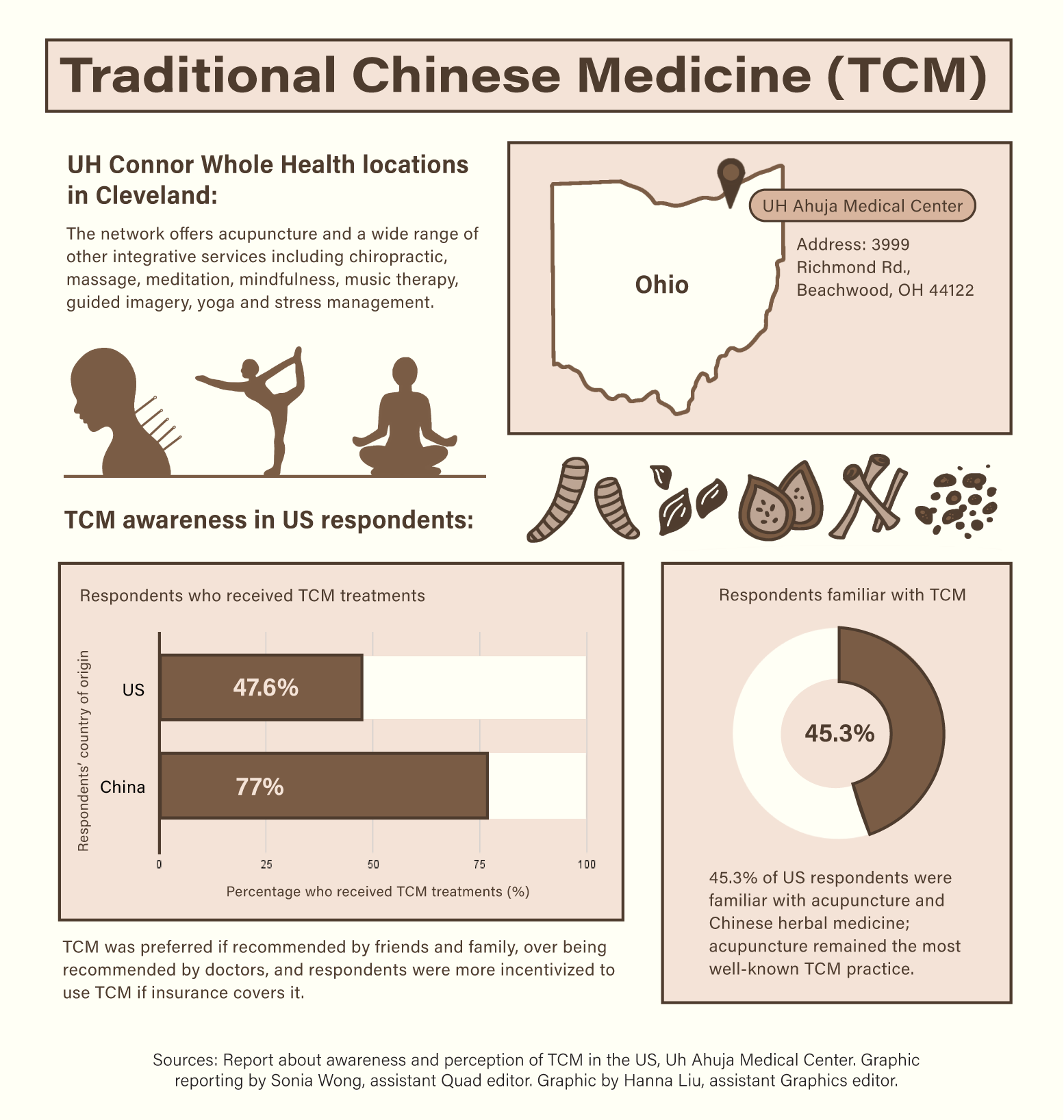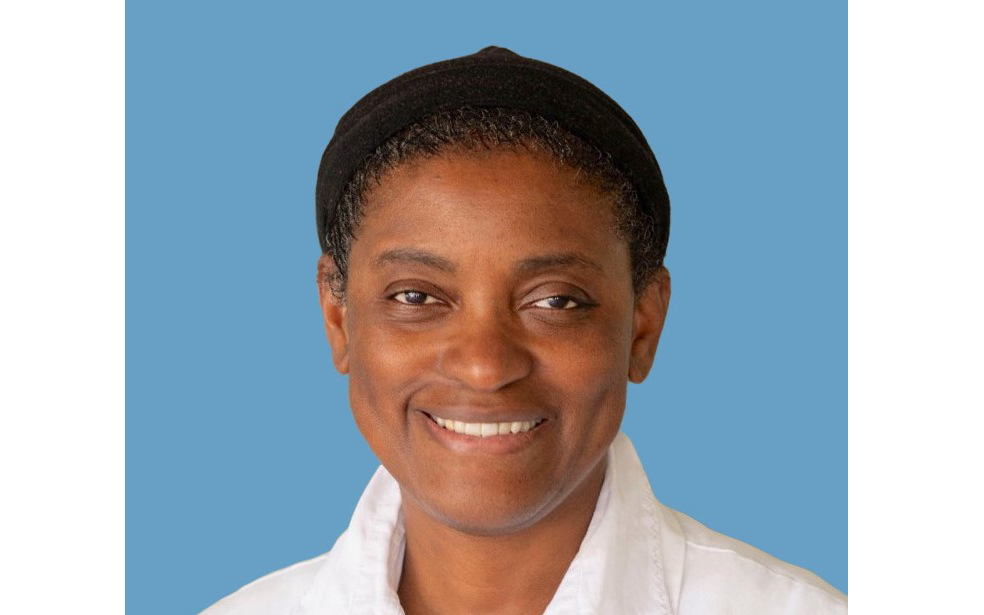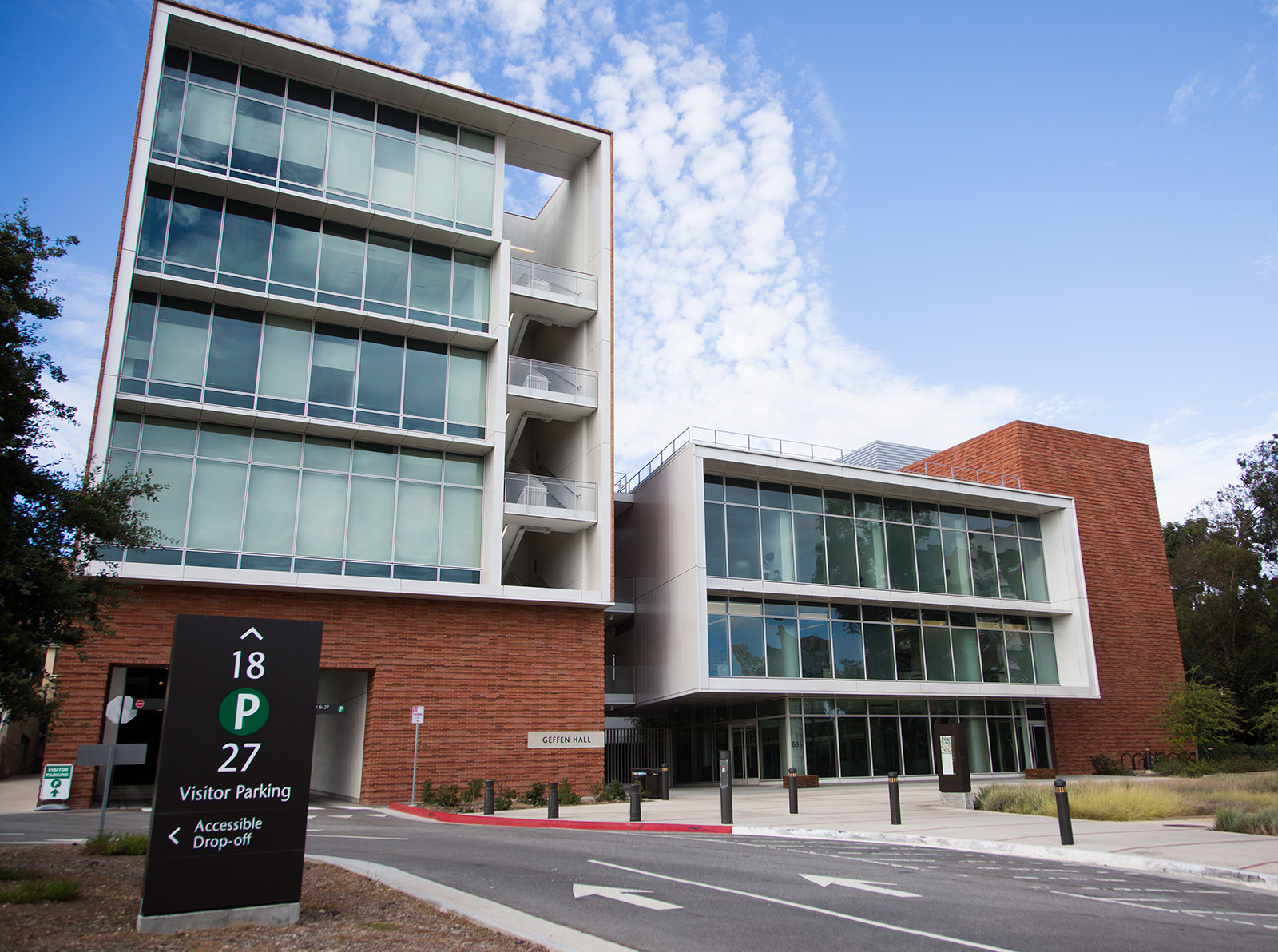How Bruins are exploring, researching benefits of traditional Chinese medicine

By Anthony Li
Sept. 6, 2023 5:19 p.m.
Forty years ago, practicing acupuncture was a fourth degree felony in the United States.
However, practices such as acupuncture and other forms of traditional Chinese medicine have existed for about 3,000 years before the United States was even a country.
TCM is based on the concept that disease results from an imbalance in the body’s energy, which affects organs and organ systems. This practice spread to the U.S. with waves of immigration in the mid-1800s according to the book “Herbs and Roots: A History of Chinese Doctors in the American Medical Marketplace.” However, while it seems TCM has gained more attention and acceptance in the U.S., the perception of TCM in the general public and medical field remains unclear. As of September 2023, there has only been one report and one published paper on the general public perception of TCM in the U.S.
At UCLA, some students are learning for the first time about TCM and other alternative medicines through student organizations.
Kavya Pillai is a rising third-year psychobiology student and graphic designer for the club Students for Integrative Medicine. SIM focuses on promoting awareness of integrative medicine, a practice that combines conventional medicine with complementary and alternative medicine, including TCM. Pillai said she first joined SIM at UCLA because of her mother, who practiced meditation and Ayurveda, an Indian alternative medicine system.
Looking for something to enhance her well-being at UCLA, Pillai became interested in SIM. She was fascinated by all the benefits of alternative medicines that were unknown to her before, such as Tai Chi, which she could incorporate into her daily life.
Sara Shimabukuro, a rising third-year anthropology student and vice president of SIM, first joined SIM out of curiosity without any knowledge of integrative medicine. However, Shimabukuro said her positive experience with yoga led her to become interested in other forms of alternative medicine. Since then, she has learned about a variety of practices through SIM.
“I learned so much about ways I can improve my own health, … like the Tai Chi workshop, meditation and just ways to improve my diet,” Shimabukuro said. “I also learned a lot about the different types of traditional Chinese medicine as well as herbal medicine, and I just thought that was really cool.”
Pillai said most members of SIM joined out of a need for self-care and a healing environment. She added that SIM is not a competitive club since its purpose is to help people heal.
“One of the good things about SIM is that everyone felt mentally well in it,” Pillai said.
Pillai added how, in SIM, pre-medicine students from different backgrounds became interested in the potential of integrative medicine for better treatment methods. This includes a neuroscience major who wanted to learn about the relationship between the brain and integrative medicine and a yoga instructor who wanted to learn about how fitness relates to traditional Chinese medicine.
Indeed, traditional Chinese medicine and other forms of alternative medicine have been getting more attention within the medical field in the U.S. For example, University Hospitals in Ohio established a COVID-19 recovery clinic with a whole-person care model that is committed to treating long COVID-19, using practices such as acupuncture and stress management.
Ka-Kit Hui works to find ways to combine TCM and Western medicine at the UCLA Center for East-West Medicine, which he has been building for the past two decades. Hui, who trained as a physician at UCLA, said he had a vision of using TCM to make up for the shortcomings of Western medicine, which mostly focuses on curing rather than preventing disease and treats one part of the body instead of seeing the body as an interconnected whole.
According to the center’s 25th-year commemorative editorial, Dr. Hui said the East-West Medicine Model of Care is more holistic in its approach to address a person’s needs comprehensively. He explained that while Western medicine pinpoints certain reasons for certain symptoms, TCM looks at the whole body to treat systematic imbalances.
“By using western medicine to look at the trees and Chinese medicine to look at the forest, we have a much more comprehensive view of health,” Hui said in the editorial.
Pillai and Shimabukuro also said they find TCM and other forms of alternative medicine appealing for this reason. They both said a holistic approach that removes the root problem is better than medications that only temporarily alleviate issues.
“They’re (TCM practitioners) treating the underlying problems. Because if you’re just taking medications, if you stopped taking the medications the symptoms will just come back,” Shimabukuro said.
The Center for East-West Medicine offers fellowships for medical students to study TCM. Hui said the fellowship attracts students of many different ethnic backgrounds. These fellows became interested after benefitting from TCM treatments firsthand, while those who have experienced TCM in their culture were curious about the appeal of this practice used by their relatives.
Hui also teaches the class “Medicine 185: Integrative East-West Medicine for Health and Wellness” every summer in hopes of offering the knowledge of TCM to students in a more understandable format.
Dr. Hui said he values TCM’s theory for its ability to restore balance to the body to help solve modern problems. In his early days, Hui said he learned about which acupuncture points and which herbs to use for certain diseases, but that it was reductionistic.
Reductionism focuses on finding the simplest constituents of a complex system. Hui said it was only later on that he realized the TCM conceptual framework emphasizes systems and their balance as a core value.
Overall, he said he believes that integrative medicine can and should be used to upgrade current healthcare models and contribute to solving societal issues such as aging and income inequality. Hui added that the current model comes at a cost because it does not effectively address these systemic issues.
“There is a need for a new health care model for the world,” Dr. Hui said. “The current model has been very successful at saving lives, but at a high cost. So it’s not sustainable.”




